When navigating the intricate decision-making process for IT support, businesses face a critical choice: whether to opt for staff augmentation or managed services.
This decision is pivotal for businesses struggling with the challenge of scaling their operations efficiently while maintaining or improving the quality of their IT services.
The dilemma often stems from trying to find a balance between adding expertise to their teams without overshooting budgets or committing to long-term contracts that might not align with their evolving needs.
| As Nahjee Maybin, CEO of Kenyatta Computer Services says, “Optimal IT support selection is critical for maintaining operational excellence and enhancing team expertise.” |
Understanding the nuances between staff augmentation and managed services is crucial for businesses aiming to bolster their IT capabilities without compromising their agility or financial health.
Understanding Staff Augmentation
Staff augmentation offers the flexibility to scale your workforce up or down based on project demands. This model is ideal for short-term projects or when you need specialized skills for a specific duration. It seamlessly integrates external staff members into your existing team, ensuring that your core business processes remain unaffected.
Understanding Managed Services
Opting for managed services allows businesses to delegate their IT operations entirely to an external provider. This model is particularly advantageous for companies looking to focus on their core business activities without being bogged down by the complexities of managing an IT department.
Managed services can offer cost-effectiveness in the long run by reducing the need for an extensive in-house IT team and minimizing long-term costs associated with software development and maintenance.
Bogged Down by IT Management Challenges?
Kenyatta Computer Services streamlines your IT processes with expert management.
Staff Augmentation vs Managed Services: A Comprehensive Overview
The debate of staff augmentation vs managed services is not just about choosing an IT solution; it’s about aligning your company’s needs with the right support.
1. The Basic Differences
Staff augmentation: Allows businesses to temporarily expand their in-house team with external experts. This model is particularly beneficial for projects requiring specialized skills that your existing team may lack.
Managed Services: On the other hand, the managed services model offers a more holistic approach, where an external provider manages all or part of your IT functions, often under a service level agreement (SLA).
2. Cost-Effectiveness
Staff augmentation: When evaluating staff augmentation vs managed services from a cost perspective, it’s important to consider both short-term and long-term financial implications. Staff augmentation can be more cost-effective for short-term projects, as it avoids the overheads of hiring full-time staff.
Managed Services: However, for ongoing IT needs, managed services can provide a more predictable cost structure with the added benefit of a service-level agreement. A survey by CompTIA found that 50% of companies using managed services reduced their annual IT costs by 1-24%.
3. Leveraging Specialized Skills and Expertise
Staff augmentation: The choice between augmentation and managed services often hinges on the required skills and expertise. Staff augmentation allows businesses to fill specific skill gaps, offering access to a wide pool of talent for as long as needed.
Managed Services: Meanwhile, managed services offer access to a team with a broad range of skills and expertise, ensuring that all aspects of your IT operations are covered.
4. Flexibility and Speed of Implementation
Staff augmentation: Staff augmentation shines in its ability to quickly adapt to the changing needs of a business. When a project requires immediate attention or a specific skill set for a limited period, staff augmentation can swiftly fill this gap.
Managed Services: On the other hand, the implementation of managed services may take longer initially, as it involves a comprehensive assessment of the company’s IT needs and the establishment of a tailored service level agreement. However, this investment in time pays off with a stable and reliable IT infrastructure that supp
5. Control and Oversight
Staff augmentation: One of the key advantages of staff augmentation is the level of control it offers businesses over their projects. With augmented staff working alongside the in-house team, companies retain direct oversight of the project’s progress and the quality of work.
Managed Services: In contrast, managed services involve handing over control of certain IT functions to an external provider. This delegation can be a double-edged sword. On one hand, it frees up internal resources and allows businesses to focus on core operations without being sidetracked by IT management tasks. On the other hand, companies must trust their managed service provider (MSP) to make decisions that align with their objectives and interests.
The success of this model heavily relies on the selection of a reliable MSP that understands the company’s vision and can act as a true partner in its growth.
6. Scalability and Long-Term Growth
Staff augmentation: It offers an effective way to scale your workforce according to project demands. This model is inherently flexible, allowing businesses to add or reduce external staff based on current requirements. However, while staff augmentation can support short-term growth by providing the necessary manpower, it may not be the most efficient way to scale in the long term, especially if the demand for IT resources becomes a constant factor.
Managed Services: Managed services excel in supporting long-term growth. By outsourcing IT management, businesses can ensure that their IT infrastructure evolves in tandem with their growth. Managed services providers typically offer scalable solutions that can be adjusted as the company expands, providing a sustainable framework for growth.
Additional Differences Between Managed Services vs Staff Augmentation
| Criteria | Staff Augmentation | Managed Services |
| Team Integration | High – Augmented staff work closely with the in-house team. | Moderate – MSP operates semi-independently or fully integrated, depending on the agreement. |
| Innovation Potential | Limited to the scope of augmented staff’s expertise. | High – Access to broader technological and strategic resources. |
| Risk Management | Client-managed risks related to project execution. | Provider-assumed risk management, including cybersecurity and compliance. |
| Cost Predictability | Variable – Dependent on project duration and staff levels. | High – Fixed or predictable costs as per SLA. |
| Long-term Strategic Value | Dependent on the continuous need for augmentation. | High – Ongoing partnership can drive IT strategy alignment and growth. |
Making the Right Choice for Your Business
Aligning with Your Business Needs
Choosing between staff augmentation vs managed services requires a deep understanding of your business’s current needs and future goals. If your project demands highly specialized skills for a limited time, staff augmentation might be the way to go.
Conversely, if you’re looking for a long-term partner to take complete responsibility for your IT operations, allowing you to focus on your core business, managed services would be a better fit.
| More resources you might like: |
Considerations for Long-Term Success
In the long run, the right IT support model can significantly impact your business’s agility and competitiveness. It’s essential to weigh the pros and cons of staff augmentation vs managed services, considering factors like cost, flexibility, expertise, and the nature of your IT projects.
The challenge of choosing the right IT solution—be it staff augmentation or managed services—boils down to understanding your business’s unique pain points and objectives.
Whether it’s the need for specialized skills for a short-term project or the desire to focus on core business functions without the hassle of managing an IT department, the decision has far-reaching implications.
Unlock the Potential of Managed Services with Kenyatta Computer Services

Kenyatta Computer Services boasts an impressive legacy of 33 years plus a combined expertise of over 100 years.
As a frontrunner in the field, we’re dedicated to demonstrating how our managed services can revolutionize your IT infrastructure.
| Explore our full range of IT services in Denver:
|
Reach out to us for a free consultation, and let us guide you through the intricacies of IT solutions, propelling your business toward unparalleled success.


